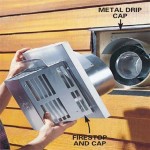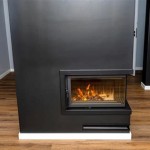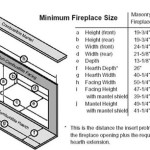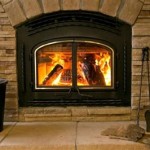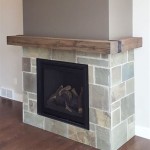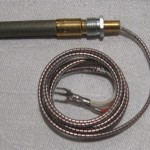Selecting the Right Outside Fireplace Furniture
An outdoor fireplace transforms a patio or backyard into an inviting gathering space. The right furniture enhances this experience, providing comfort, functionality, and aesthetic appeal. Selecting suitable furniture for an outdoor fireplace area requires careful consideration of several factors, including material durability, safety, style, and spatial constraints. This article provides essential information to guide the selection process and ensure a well-designed and enjoyable outdoor living area.
Understanding Material Durability and Weather Resistance
The primary consideration when selecting outdoor fireplace furniture is the durability and weather resistance of the materials. Furniture exposed to the elements, particularly near a heat source, needs to withstand temperature fluctuations, moisture, sunlight, and potential embers. The choice of material significantly impacts the longevity and maintenance requirements of the furniture.
Metal: Metals such as aluminum, wrought iron, and stainless steel are popular choices for outdoor furniture. Aluminum is lightweight, rust-resistant, and easy to maintain, making it suitable for areas with frequent relocation of furniture. Wrought iron offers a classic, heavy-duty option, but requires regular maintenance to prevent rust. Stainless steel is highly durable and corrosion-resistant, though it can be more expensive. Powder coating is often applied to metal furniture to provide an additional layer of protection against the elements and to enhance its aesthetic appeal. Consider the gauge and construction of the metal frame; thicker gauges and robust welds indicate higher quality and durability.
Wood: Wood furniture provides a natural and warm aesthetic. Teak, cedar, and redwood are naturally resistant to decay and insect infestation, making them suitable for outdoor use. Teak, in particular, is highly regarded for its durability and ability to withstand moisture. Regular oiling or staining is recommended to maintain the wood's appearance and protect it from weathering. Avoid using softwood varieties that are more susceptible to rot and damage. Check for kiln-dried wood, which is less prone to warping and cracking.
Resin Wicker: Resin wicker, also known as all-weather wicker, is a synthetic material designed to mimic the appearance of natural wicker. It is typically made from polyethylene or PVC and is resistant to water, UV rays, and mildew. Resin wicker furniture is lightweight, easy to clean, and available in various styles and colors. High-quality resin wicker will incorporate UV inhibitors to prevent fading and cracking over time. The frame beneath the wicker is equally important; aluminum frames are preferable for their rust-resistance.
Stone and Concrete: Stone and concrete are durable and weather-resistant materials that can be used for benches, tables, and other outdoor furniture pieces. These materials are heavy and stable, making them suitable for windy environments. Stone and concrete furniture can provide a rustic and natural look. However, they can also be cold to the touch, so consider using cushions or throws for added comfort. Sealing stone and concrete furniture can help protect it from staining and water damage.
Cushions and upholstery should also be made from weather-resistant materials. Look for fabrics such as solution-dyed acrylic, polyester, or olefin, which are resistant to fading, mildew, and water damage. Consider using cushion covers that can be easily removed and washed. Storage options for cushions during inclement weather can significantly extend their lifespan.
Prioritizing Safety and Fire Resistance
Safety is paramount when selecting furniture for an outdoor fireplace area. Proximity to the fire source necessitates careful consideration of the materials' fire resistance and the overall layout of the furniture arrangement. Flammable materials should be kept at a safe distance to prevent accidental ignition.
Distance from the Fire: Maintain a safe distance between the fireplace and any flammable furniture. A minimum distance of 3 to 5 feet is generally recommended, but this may vary depending on the size and intensity of the fire. Check the manufacturer's guidelines for the fireplace regarding safe distances for combustible materials. Consider the prevailing wind direction, as sparks and embers can travel further downwind.
Fire-Resistant Materials: Opt for furniture made from materials that are inherently fire-resistant or treated with fire-retardant chemicals. Metal furniture, particularly steel and aluminum, is a good choice due to its non-combustible nature. Wood furniture should be treated with a fire-retardant sealant or stain. Cushions and upholstery should be made from fire-resistant fabrics that meet relevant safety standards. Avoid using furniture made from highly flammable materials such as untreated wood, certain types of plastic, or synthetic fabrics that melt easily.
Layout and Spacing: Arrange furniture in a way that allows for easy movement and prevents crowding around the fireplace. Ensure that there is ample space between seating areas and the fire source. Avoid placing furniture in direct pathways where people are likely to walk, as this can increase the risk of accidental contact with the fire. Consider the placement of side tables and other accessories to prevent them from being knocked over and creating a hazard.
Protective Screens and Barriers: Use a fireplace screen or spark arrestor to contain embers and sparks. This will help prevent accidental fires and protect furniture from damage. A non-combustible barrier, such as a stone or brick wall, can also be used to create a buffer zone between the fireplace and the seating area. Clear any dry leaves or other flammable debris from the area around the fireplace before each use.
Emergency Preparedness: Keep a fire extinguisher or a bucket of water nearby in case of emergencies. Educate all users about fire safety precautions and the proper use of fire safety equipment. Regularly inspect the fireplace and surrounding area for potential hazards, such as cracks in the chimney or loose debris.
Considering Style, Comfort, and Functionality
Beyond durability and safety, the style, comfort, and functionality of outdoor fireplace furniture are essential considerations. The furniture should complement the overall aesthetic of the outdoor space and provide a comfortable and inviting seating area. Functionality should be tailored to the intended use of the space, such as dining, lounging, or entertaining.
Aesthetic Compatibility: Choose furniture that complements the architectural style of the house and the overall design of the outdoor space. Consider the color palette, textures, and materials used in the surrounding environment. For example, rustic wood furniture might be suitable for a natural, woodsy setting, while sleek metal furniture might be better suited for a modern, minimalist space. Cohesive design creates a more visually appealing and harmonious outdoor living area.
Comfort and Ergonomics: Select furniture that provides adequate support and comfort. Consider the seat height, depth, and angle of chairs and sofas. Use cushions and pillows to enhance comfort and add visual appeal. Ergonomically designed furniture can promote relaxation and prevent discomfort during extended periods of sitting. Test the furniture's comfort level before purchasing, if possible. Consider adding outdoor rugs to define seating areas and enhance comfort underfoot.
Functionality and Intended Use: Determine how the outdoor fireplace area will be used. If the primary purpose is dining, choose a dining table and chairs that are appropriately sized for the space. If the area is intended for lounging, select comfortable sofas, armchairs, and ottomans. For entertaining, consider adding bar stools, side tables, and serving carts. Choose furniture that is easy to move and rearrange to accommodate different activities. Consider incorporating storage solutions, such as benches with built-in storage or outdoor cabinets, to keep items organized and accessible.
Space Planning and Layout: Before purchasing furniture, measure the available space and create a layout plan. Consider the flow of traffic and the placement of other elements, such as plants, lighting, and accessories. Avoid overcrowding the space, as this can make it feel cramped and uncomfortable. Leave ample space for movement and socializing. Use outdoor rugs to define different zones within the outdoor space, such as a seating area, a dining area, and a cooking area.
Accessories and Ambiance: Enhance the ambiance of the outdoor fireplace area with accessories such as outdoor lighting, throws, and decorative pillows. String lights, lanterns, and candles can create a warm and inviting atmosphere. Throws and pillows can add comfort and style. Consider adding plants to bring life and color to the space. Personalize the area with decorative items that reflect your individual taste and style. Consider adding a sound system for music or ambient sounds.
By carefully considering material durability, safety, style, comfort, and functionality, one can create an outdoor fireplace area that is both beautiful and enjoyable. Selecting high-quality, weather-resistant furniture that complements the overall design of the space is crucial for ensuring a long-lasting and inviting outdoor living area.

Our Outdoor Fireplace Styled Snapshots

30 Outdoor Fireplace Ideas Cozy Fireplaces

Outdoor Fireplace Design Secrets From An Expert

11 Reasons We Love Outdoor Fireplaces Lawn Leisure

Fire Features Patiotown Com

Outdoor Furniture Around A Fireplace Fire Pit On Patio With Make Garden Rooms Designs

Outdoor Fireplace With Bench Seating W Tips From A Professional Mason

Affordable Patio Decor Ideas And Outdoor Trends For 2024 Jane At Home Backyard Fireplace Designs Modern

Outdoor Patio Fireplace Kitchen Furniture Stonewood S

Diy Outdoor Fireplace Ideas
Related Posts

